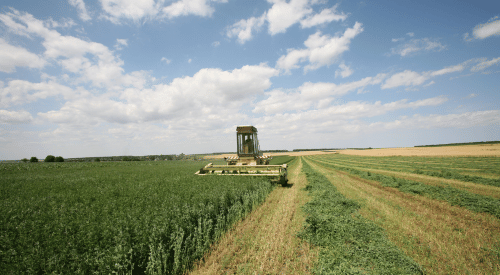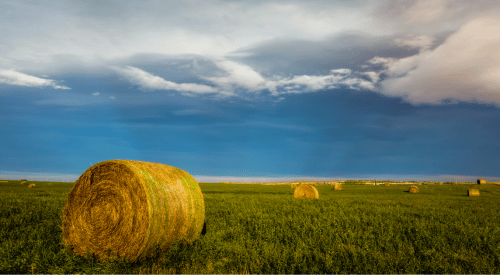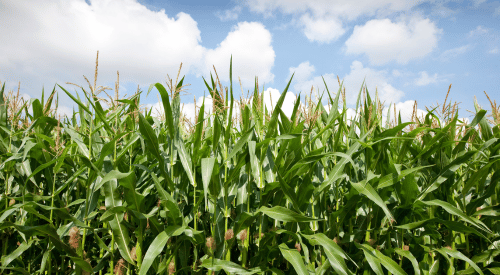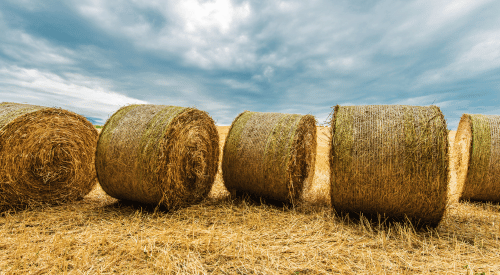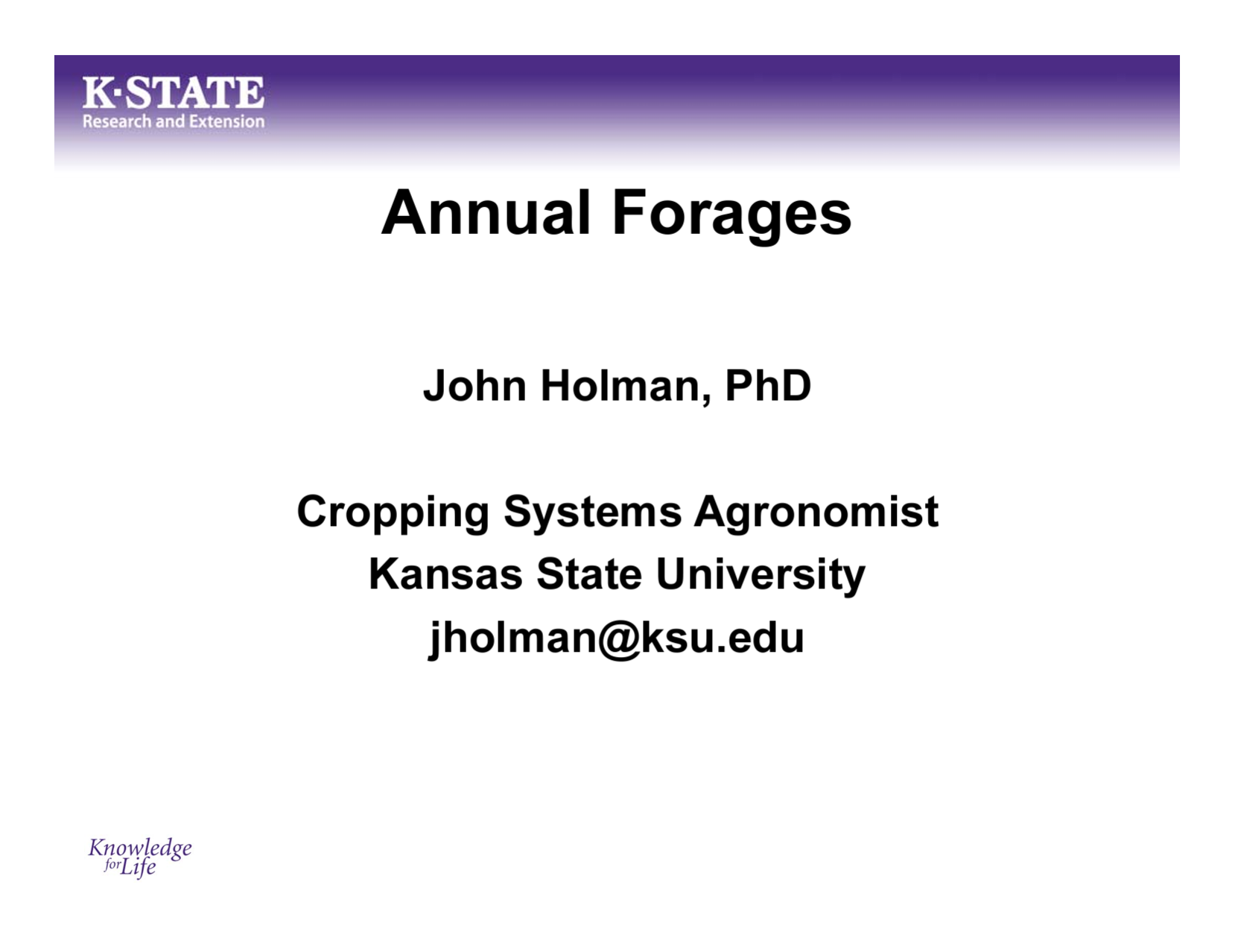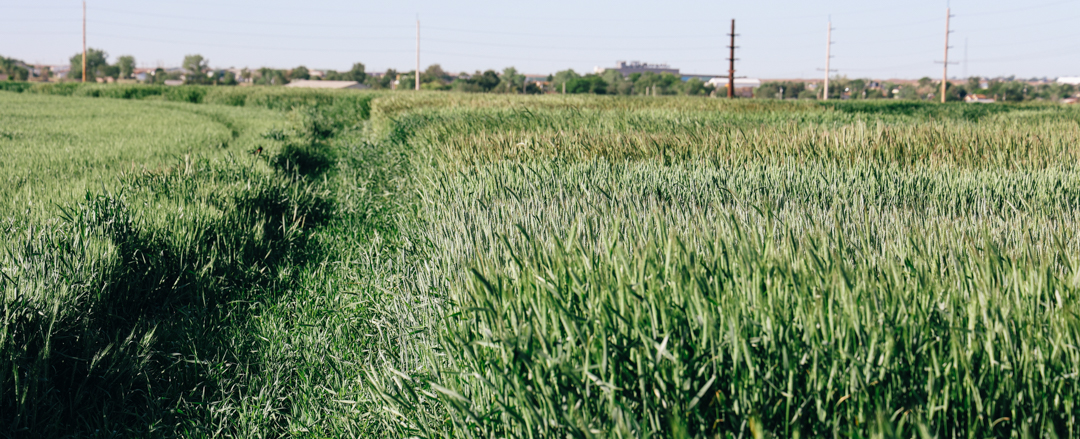
Forage
Forage production is important to the region’s livestock and dairy industries and is becoming increasingly important as irrigation-well capacity declines.
Forage production is a vital part of the agricultural economy in western Kansas. With a strong cattle industry in the region, livestock producers depend heavily on locally produced hays, silages, and other forages to feed their herds. Kansas produced over 5 million tons of hay in 2022, ranking 3rd among all states and Kansas ranks highly nationwide in the production of key forages like alfalfa, sorghum silage, and all hay.
To support continued success in forage production for the cattle industry and beyond, the Western Kansas Research Extension Centers works closely with the Department of Agronomy, Department of Agricultural Economics, Department of Animal Science and Industry, and the Division of Biology to conduct both applied and basic research. Forage trials at the WKREC conduct critical research on improving yields, sustainability, crop rotation management, and efficiency of forage crops under the distinct climate and soils of western Kansas.
2021 KS Summer Annual Forage Hay and Silage Trial
In 2021, summer annual forage variety trials were conducted across Kansas near Garden City, Hays, and Scandia. Across the sites, a total of 104 hay varieties and 55 sorghum silage varieties were evaluated.
Kansas Forage Production
Forage research is pivotal for sustaining western Kansas agriculture, particularly supporting the thriving livestock industry. The nutritional significance of forages for cattle health directly influences ranching and cattle farming economic viability. Cultivating forage crops offers farmers valuable income diversification, contributing significantly to farm economies. Forages, adapted to the challenging climate, play a crucial role in water management and conservation, fostering sustainable practices and potentially reducing water-related costs. Including forages in crop rotation contributes to soil health, improving yields and promoting cost-effectiveness.
Local forage production reduces dependence on external sources, supporting local businesses and lowering transportation costs. Economic data from a Kansas Department of Agriculture IMPLAN model reveals a substantial direct impact, with an estimated $306.9 million in output and 5,478 jobs. Accounting for indirect effects, the total economic impact rises to $546.9 million in output and 6,673 jobs. These figures emphasize the economic opportunities for western Kansas farmers, showcasing the potential for forage cultivation to generate substantial output and employment opportunities, fostering economic growth.
Forage Testing Resources
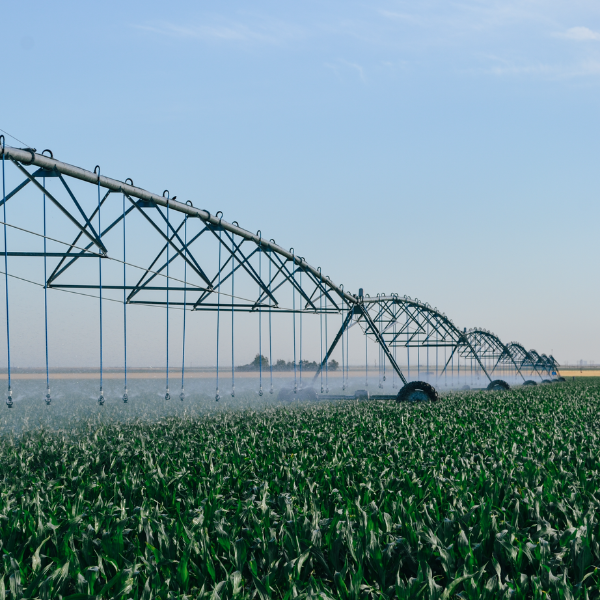
Ensuring Quality Forage: A Comprehensive Guide to Sampling for Farmers and Ranchers in Western Kansas
For farmers and ranchers in Western Kansas, ensuring forage quality is crucial for successful operations. Kansas State Research and Extension (KSRE) provides valuable publications to assist in every stage of forage production, including "Forage Sampling Procedures and Equipment" (MF3177) by John Slocombe and Lyle Lomas, which offers essential insights into effective forage sampling.
WKREC Forage Research
There is a growing interested in integrating livestock and crop production in dryland cropping system. This trend is largely driven by an interest in grazing annual forage crops, market diversification, risk aversion, and fluctuating crop and livestock prices. Livestock producers are interested in utilizing annual forages to increase carrying capacity of their current operations, to rest pastures following drought periods and utilize annual forages at a time of the year when native rangeland is not as productive or high in nutritive value. In addition, smaller and beginner farmers frequently operate both cattle and crop production enterprises to reduce the amount of capital and acres required, as compared to a single enterprise. Integrating annual forages into the fallow period may increase the productivity of dryland cropping systems while improving soil health and sustainability within the semi-arid Great Plains. Although recent research efforts at Kansas State University has helped identify ways to integrate annual forages and livestock into traditional cropping systems, questions remain variety selection, fertilizer application, reducing nitrate risk, how to best manage crop-livestock systems for soil health, precipitation storage and water use, forage safety, profitability, and overall cropping systems resilience.
Field experiments are being conducted on Kansas State University experimental fields at Garden City and Hays to answer the abovementioned questions. Specific objectives of the applied forage research research efforts are:
- Determined best cool and warm season annual forage grasses to be grown in the region,
- Quantify nutritive value, water use efficiency, forage mass and grain yield of summer annual legumes for the region to be used as supplemental protein source for livestock,
- Determine the best management practices for integrating annual forages into traditional dryland grain-only cropping systems,
- Compare a traditional dryland winter wheat-grain sorghum-fallow rotation to integrating forages,
- Quantify increase system profitability and resilience through market diversification,
- Determine conditions for increased levels of nitrate and hydrogen cyanide (HCN) in summer annual forages to reduce toxicity risk,
- Determine livestock reproductive and growth performance differences from grazing annual forages.
- Identify the impact of grazing versus haying annual forages on crop yields and soil health, and
Faculty are also actively involved in invasive weed and brush management improving the production and efficient use of rangeland. For more on pasure management, presecribed urbing, brush and weed control and grazing systems, please visit our Range Science page.
WKREC Forage Research
The objective of the Cropping Systems Research-Extension program is to address critical needs of producers and clientele in western Kansas and the surrounding Great Plains region. Goals of the program include the following: 1) help sustain agricultural production by having healthy rural communities, conserving natural resources, and remaining economically competitive; 2) identify methods of reducing off-farm input expenses, particularly irrigation, herbicides, and nitrogen fertilizer; 3) develop cropping systems that implement integrated pest management (IPM) practices for prolonging the useful life of selective herbicides, and reducing the amount and expense of pesticide applications; and 4) designing crop rotations that maximize precipitation (PUE) and fallow (FUE) use efficiency.
Meet our Research and Extension Specialists
- John Holman, Professor and Cropping Systems Specialist
- Keith Harmoney, Range and Forage Scientist
Spring Annual Forages to Fill the Gap in Cattle Feed
This K-State 2023 CropTalk webinar discusses the types of spring annual forages. Dr. John Holman, Professor and WKREC Cropping Systems and Forage Agronomist highlights his research on timing of moisture and fertilizer and how that affects yield of these grass forages for grazing and haying.
Spring Annual Forages to Fill the Gap in Cattle Feed
This K-State 2023 CropTalk webinar discusses the types of spring annual forages. Dr. John Holman, Professor and WKREC Cropping Systems and Forage Agronomist highlights his research on timing of moisture and fertilizer and how that affects yield of these grass forages for grazing and haying.
K-State Plant, Forage & Grain Analysis
Kansas State University is home to the K-State Research and Extension Soil Testing Lab, located on-campus in Manhattan. the KSRE Soil Testing Lab provides high quality analysis of soil, plant, forage, grain, and water for farmers, homeonwers, and researchers. Forage testing can be a priceless tool for producers and livestock owners helpign to determine the dietary quality—and sometimes safety–of a forage crop. Producers can select a variety fo nutrient or nitrate packages or single element tests available from the lab.
Forage Research from the Western Kansas Research-Extension Centers
|
|
Summer Annual Forages: Production and Management Presentation (PDF) |
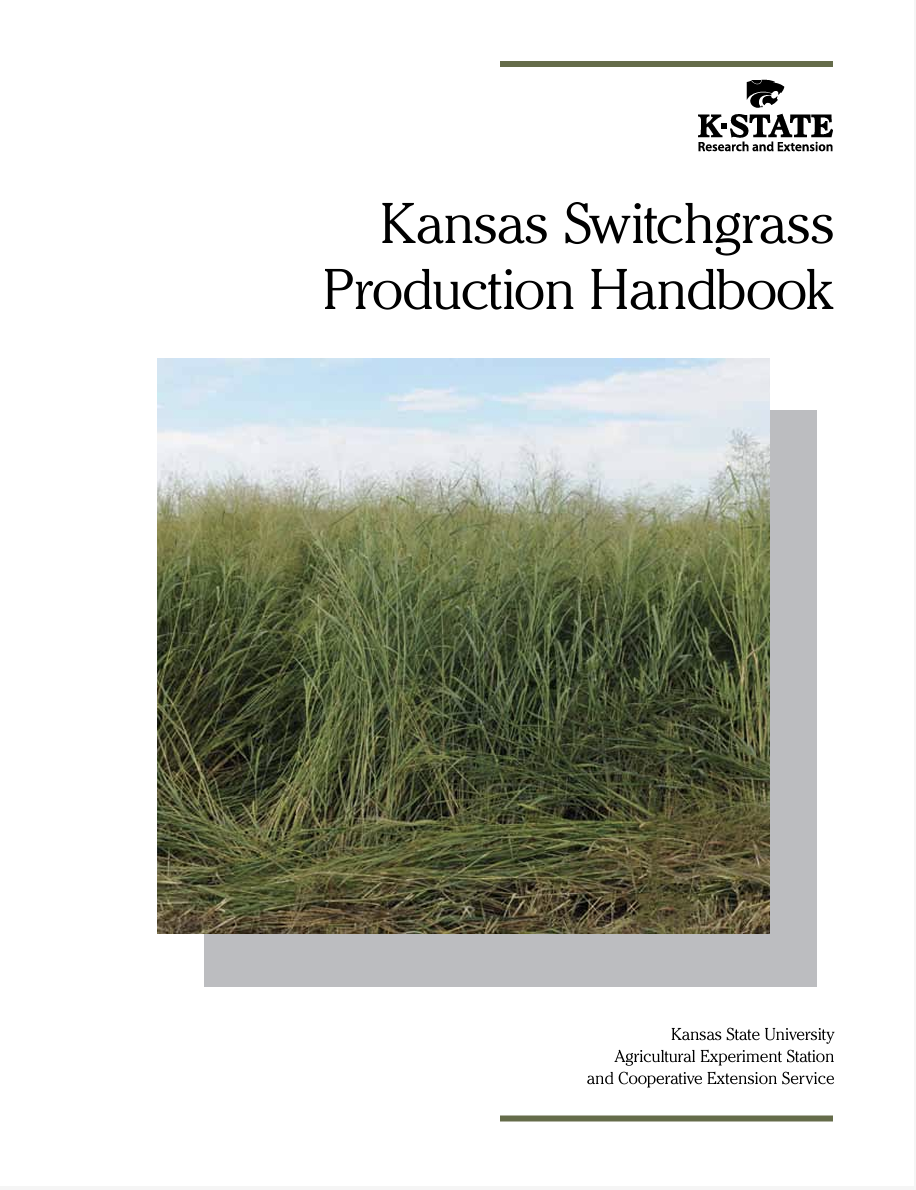 |
Kansas Switchgrass Production Handbook (PDF) |
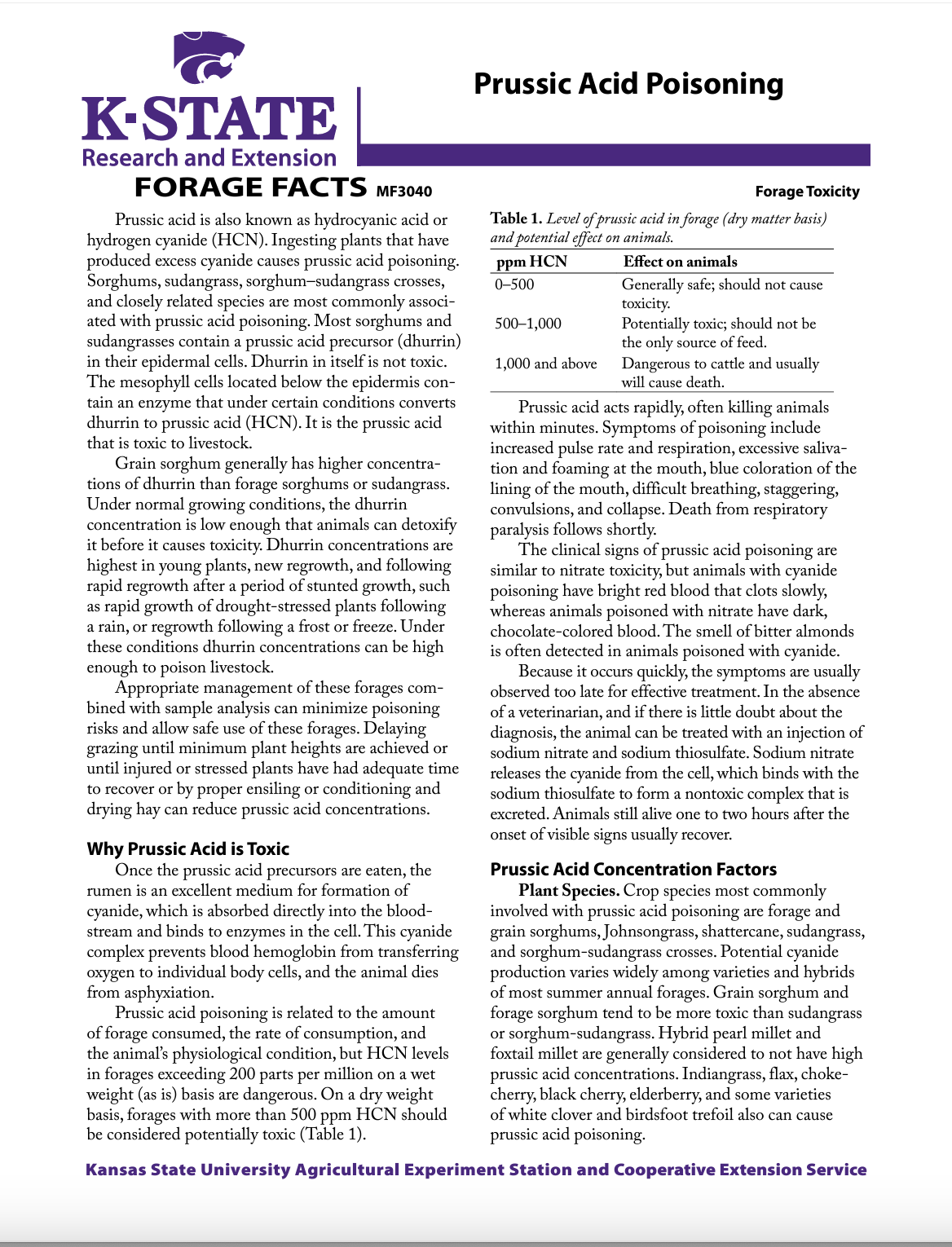 |
Prussic Acid Poisoning (PDF) |
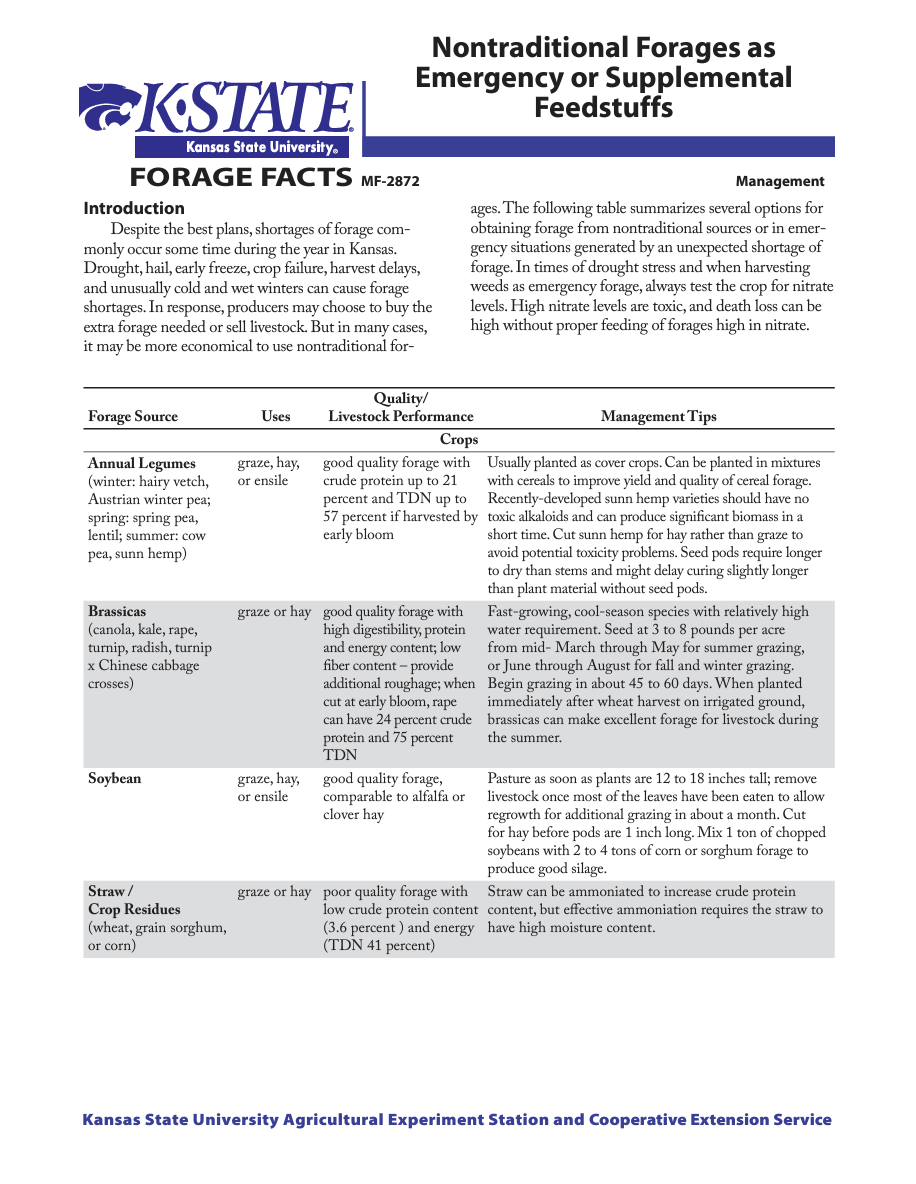 |
Nontraditional Forages as Emergency or Supplemental Feedstuffs (PDF) |
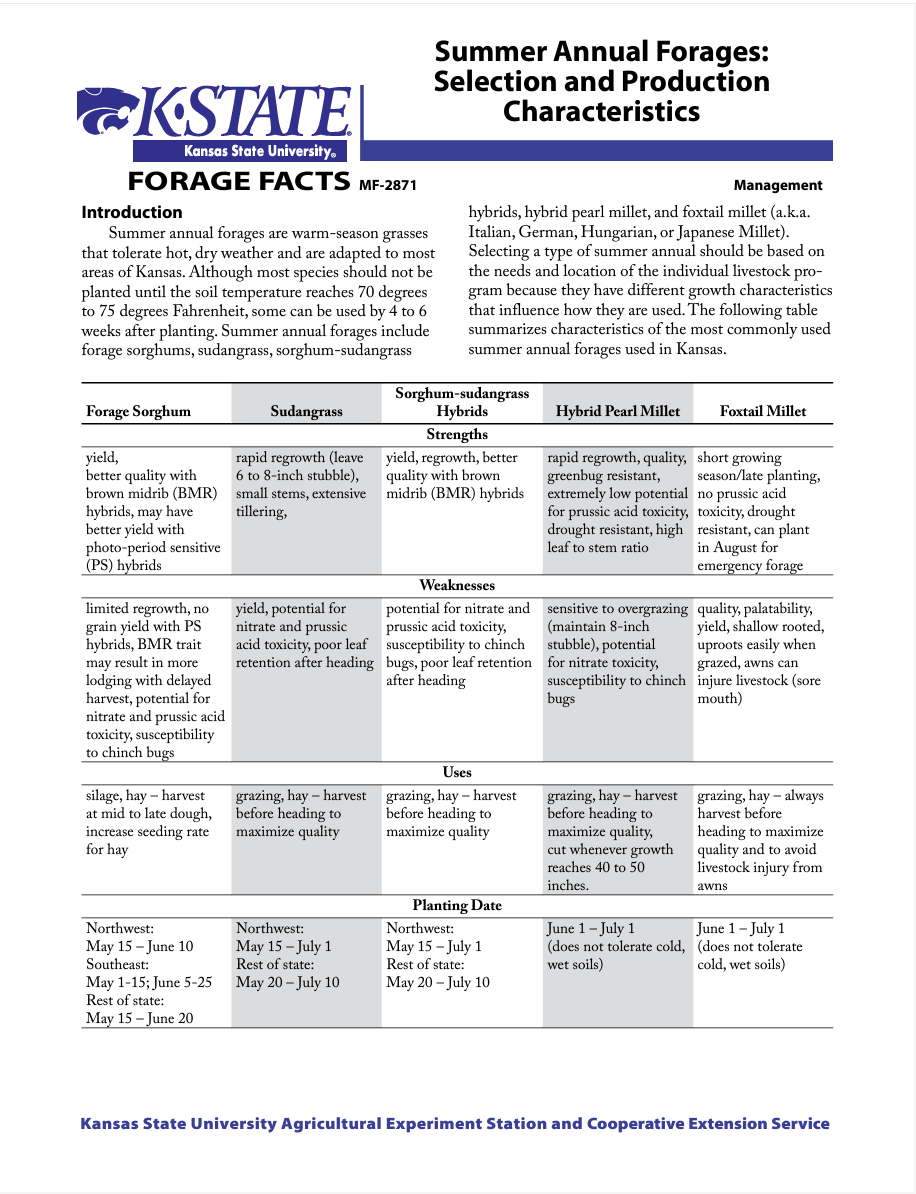 |
Summer Annual Forages: Selection and Production Characteristics (PDF) |
Journal /Reports
- Holman, J. D.; A.K. Obour, J. Lingenfelser, T. Roberts, and S. Maxwell. 2020. 2019 Kansas summer annual forage hay and silage variety trial. Kansas Agricultural Experiment Station Research Reports: Vol. 6: Iss. 6. https://doi.org/10.4148/2378-5977.7943.
- Holman, J.; Obour, A.; A. Schlegel, T. Roberts, and S. Maxwell. 2020. Estimating annual forage yields with plant available water and growing season precipitation. Kansas Agricultural Experiment Station Research Reports: Vol. 6: Iss. 8. https://doi.org/10.4148/2378-5977.7961.
- Holman, J., Obour, Y. Assefa. 2021. Rotation and tillage effects on forage cropping systems productivity and resource use efficiency. Crop Sci. 61:3830-3843. https://doi.org/10.1002/csc2.20565
- Carr, P.M., M. Bell, D.L. Boss, P. DeLaune, J.O. Eberl, L. Edwards, H. Fryer, C. Graham, J. Holman, M. A. Islam, M. Liebig, P. R. Miller, A. Obour, Q. Xue. 2021. Annual forage impacts on dryland wheat farming in the Great Plains. Agron. J. 113: 1-25. doi.org/10.1002/agj2.20513.
- Homan, J.D., A. Schlegel, K. Obour, and Y. Assefa. 2020. Dryland cropping system impact on forage accumulation, nutritive value, and rainfall use efficiency. Crop Sci. 60: 3395-3409. https://doi.org/10.1002/csc2.20251
- Obour, A.K., J. D. Holman, and A.J. Schlegel. 2020. Spring triticale forage responses to seeding rate and nitrogen application. Agrosyst. Geosci. Environ. 2020; 3:e20053. https://doi.org/10.1002/agg2.20053.
- Obour, A.K., J.D. Holman and A.J. Schlegel. 2019. Seeding rate and nitrogen application effects on oat forage yield and nutritive value. J. Plant Nutri.42:1452-1460.
- Holman, J.D., A.K. Obour, and D. B. Mengel. 2019. Nitrogen application effects on forage sorghum production and nitrate concentration. Plant Nutri. 42:2794-2804.
- Holman, J., A. Obour, A. Schlegel, T. Roberts, and S. Maxwell. 2019. Determining Profitable Forage Rotations," Kansas Agricultural Experiment Station Research Reports: Vol. 5: Iss. 7. https://doi.org/10.4148/2378-5977.7806
- Holman, J.; A. Obour, A. Schlegel, T. Roberts, and S. Maxwell. 2019. Estimating Annual Forage Yields with Plant Available Water and Growing Season Precipitation. Kansas Agricultural Experiment Station Research Reports: Vol. 5: Iss. 7. https://doi.org/10.4148/2378-5977.7807
- Holman, J., A. Obour, A. Schlegel, T. Roberts, and S. Maxwell. 2019. Integrated Grain and Forage Rotations. Kansas Agricultural Experiment Station Research Reports: Vol. 5: Iss. 7. https://doi.org/10.4148/2378-5977.7808.
